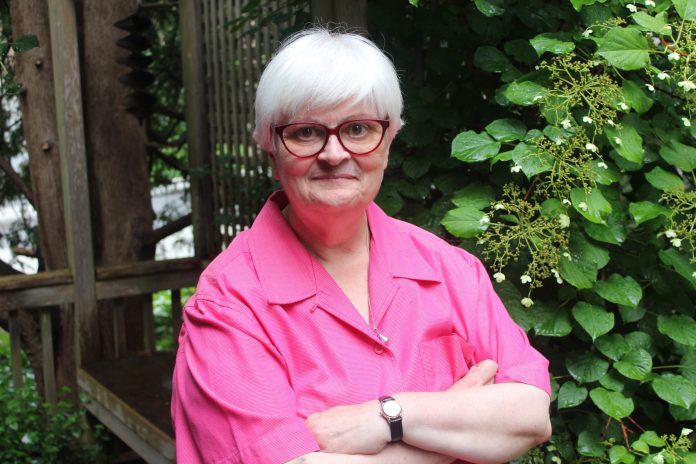Tamra Thomson was called to the bar just three days before the Queen signed the Charter in 1982. Despite being a recent law school graduate, she already had a greater understanding of the Charter and its impact than most seasoned lawyers.
“I was very active in the development of the charter. At the calling of the bar ceremony, there’s all these old white men onstage, judges and senior lawyers, and they’re all talking about this exciting time we’re about to enter, the Charter will be signed, this will be a great time for lawyers, this is going to change the law. They were talking about it as if it was theirs,” Thomson recalled.
“ I sat there thinking, how dare they? This is my charter. I worked on it. They didn’t. It was my first realization that my baby was going into the world and others were going to change it. It was the realization that this was a real thing, it was going to have a real impact and others would have an impact on it.”
While in law school during the late 70s, the Wellington West resident was an active member of the National Association of Women and the Law. In addition to studying the Bill of Rights and landmark cases in school, Thomson also worked with the Women’s Association during negotiations to reword certain sections of the Charter before it became law.
They were successful with Section 15 in particular which is known as the equality rights section. During negotiations, they added “equal benefit of the law” and ensured that people with mental disabilities were included in the open-ended list.
These were the early days of Thomson’s work fighting for equality rights for all. Her first job after being called to the bar was with Status of Women Canada where she looked at the impact of government decisions on women.
Her government career continued several years later with Labor Canada where she worked on the foundation of workers’ rights at the federal level. During the labor strike, she met her lifelong partner, Linda, who was also working within the government.
“We really got to know each other during the public service strike. We started hanging out together and realized it was more than just hanging out together,” she said, adding that this was her first relationship with a woman.“So, a strike brought us together.”
In the mid-90s, Thomson began working at the Canadian Bar Association, where she would stay for almost 30 years. She was hired as the Director of Law Reform and eventually became the Executive Director of Advocacy where she stayed until her retirement. In those roles, she oversaw every intervention proposal that went through the association.

One of the biggest influences on the work she accomplished with the association was the publication of a report about women in the legal profession. A task force within the association chaired by then-retired Supreme Court Justice Bertha Wilson created a series of recommendations to remove barriers for women in all areas of the law.
“We needed some changes to make the law better for women,” Thomson said. “It recognized that there were other issues, including queer rights, and it recommended doing more work on those issues.”
This was revolutionary for Canadian lawyers, who had always been predominantly white, conservative males. The study ultimately recommended that the profession completely change itself and implement policies to ensure equality.
Throughout her career, Thomson succeeded in implementing many of those recommendations.
Shortly after the report was published, the Sexual Orientation and Gender Identity Committee was created within the association. Queer lawyers and allies have joined the committee where they have informed public policy that the association has worked on.
Thomson was also successful at implementing a diversity element to the criteria for becoming a judiciary, which included taking into account the applicant’s life experience.
“Your life experience, what you bring to the bench, is an element of your skills, which is also a qualification.” She added: “Finding the best person for the job includes looking at the experiences and ensuring that there’s a balance of life experience on the table.”
In family law, Thomson was concerned with changing the equality rights of families. In law school, only the heterosexual family was considered. This meant that queer and adopted families were among those being excluded from the law.
“I happen to be adopted, so I learned from a very early age that families come together in many different ways. It isn’t just about blood.”
She worked with the association as an intervener in the Vriend case, arguing that sexual orientation should be included in equal marriage and protected under the Human Rights Act.
Thomson said that it took many organizations, including the Canadian Bar Association, to get “sexual orientation into the Human Rights Act and ensure that it is interpreted as the concept evolves.”
While there were many success stories, there were also many setbacks. Thomson said that there were people who would always accept inequality as the norm, but she and many others refused to let that remain.
“Justice, equality and democracy are fragile things. You have to be vigilant of working to make them better and to keep them,” said Thomson.
